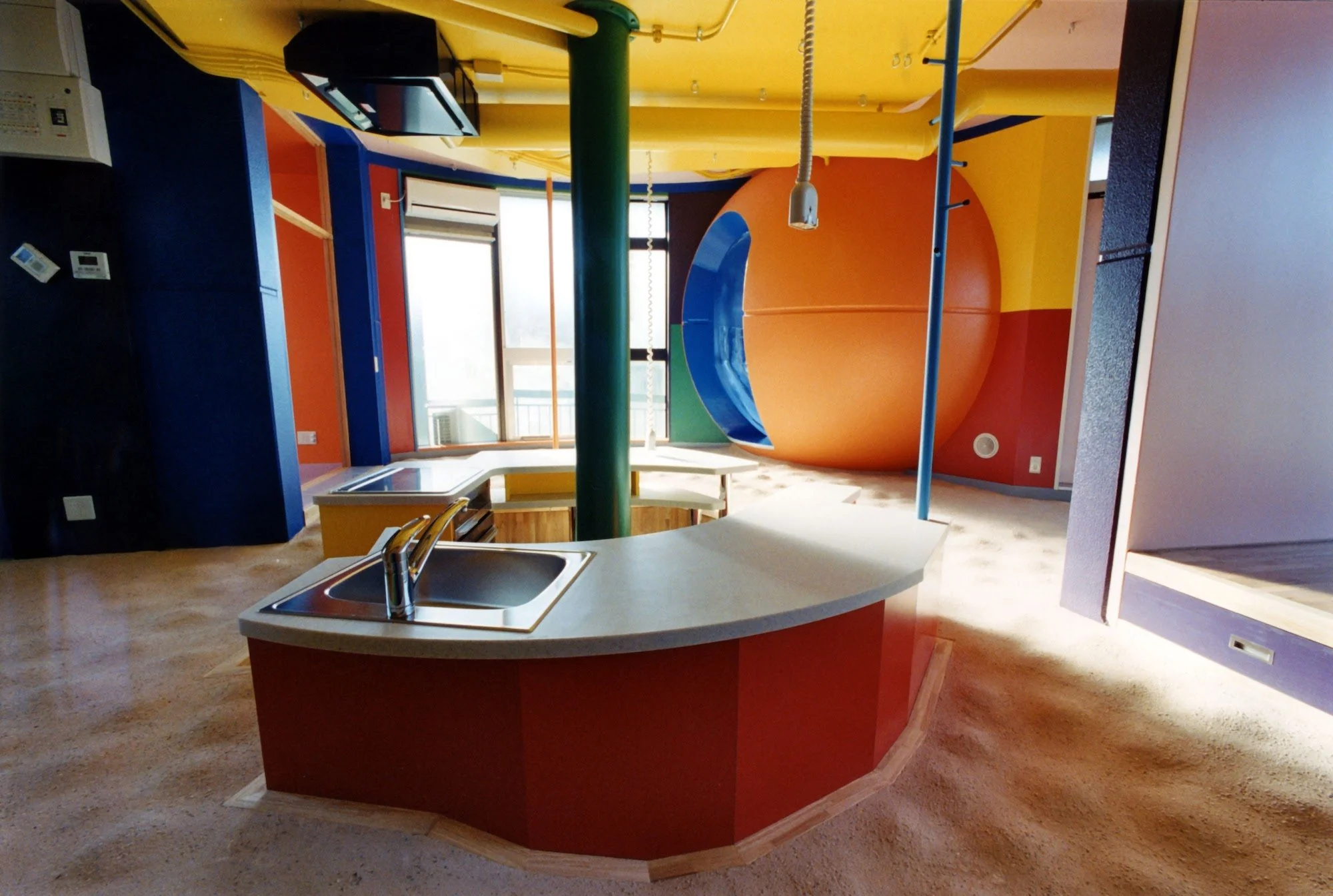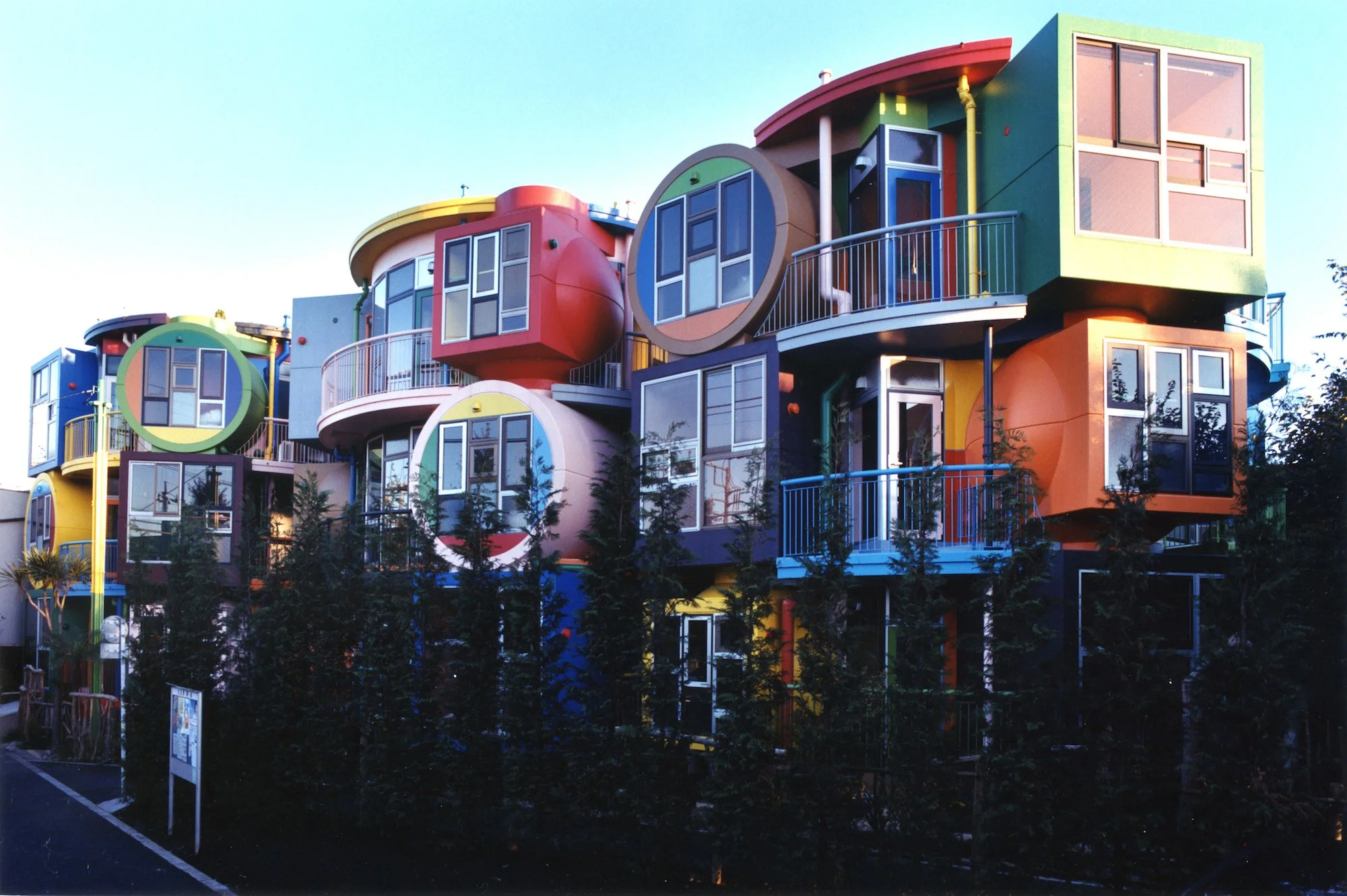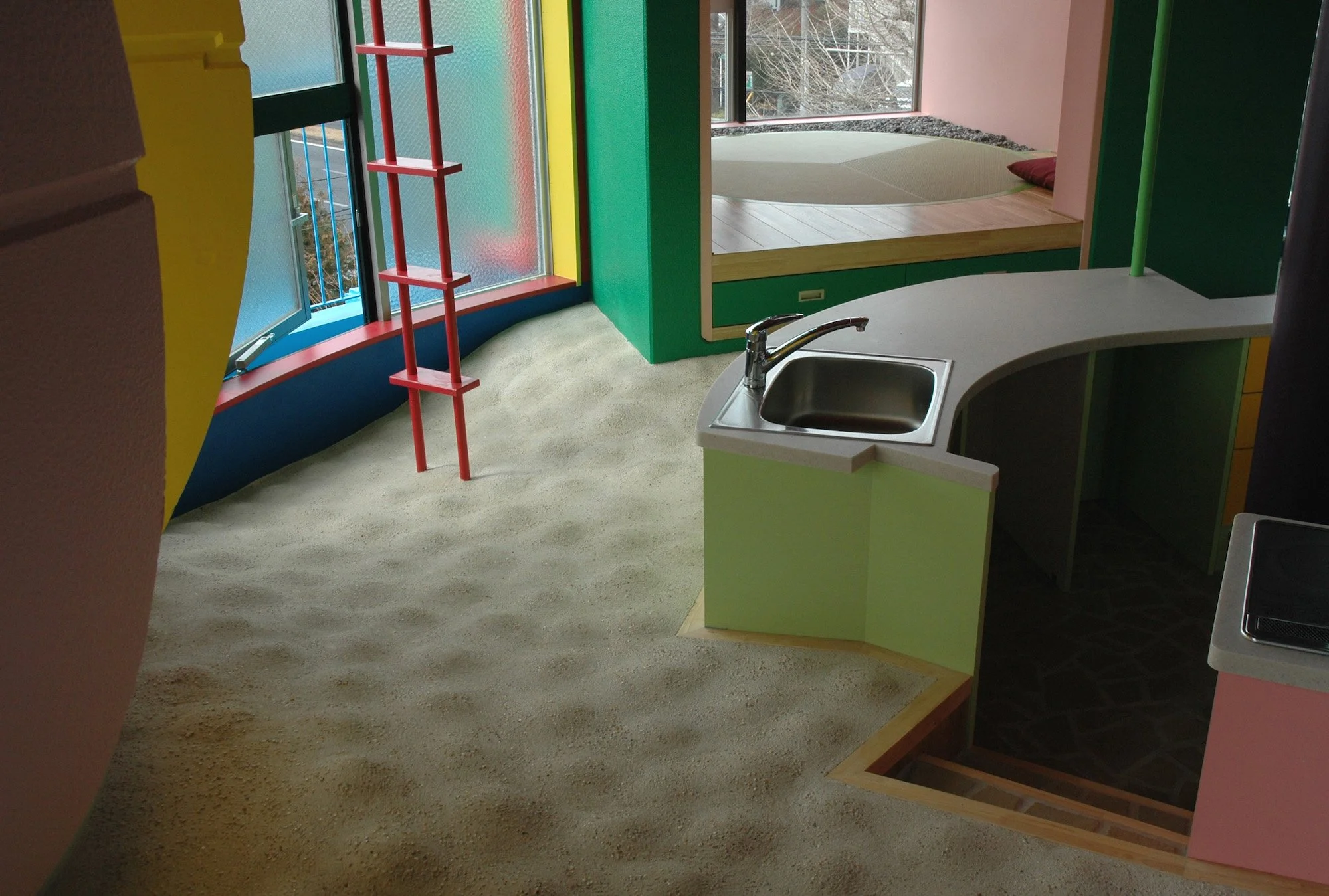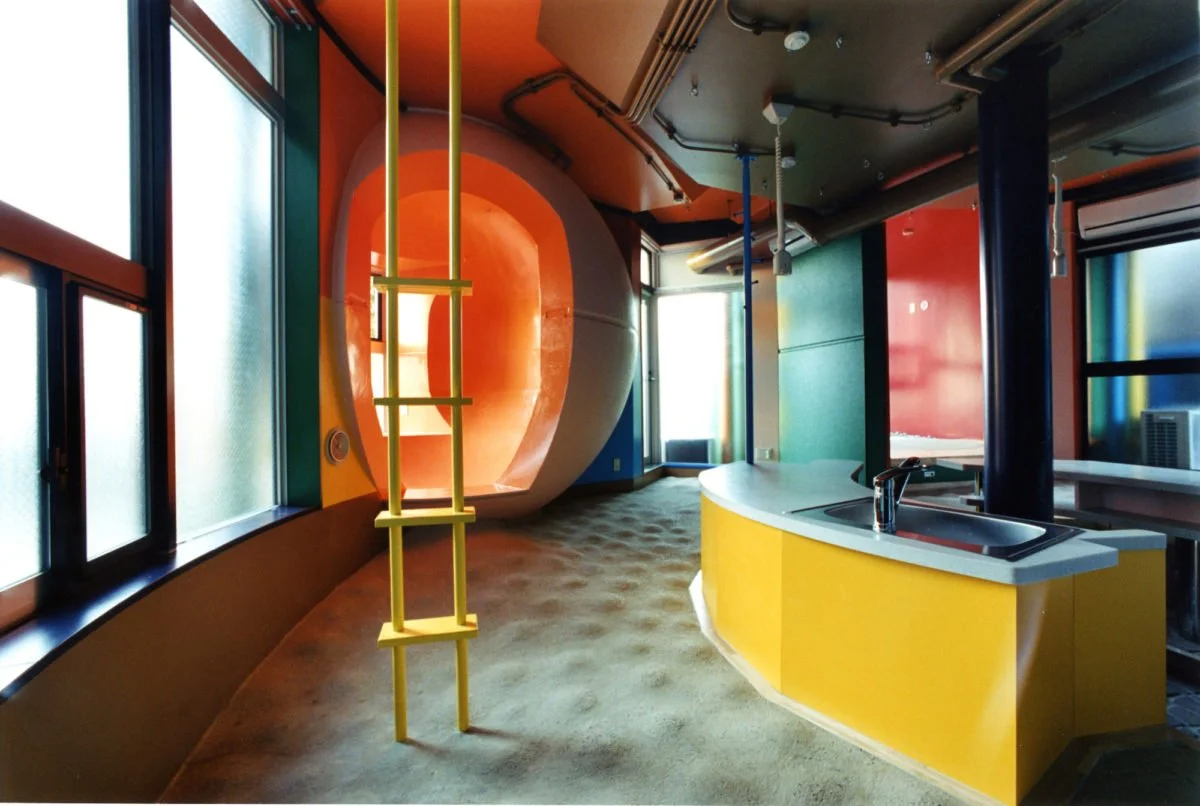Coworking Before Coworking #2: Architecture Against Death
If Andy Warhol’s Factory was a space where art and work became indistinguishable, then the projects of Madeline Gins and Shusaku Arakawa went one step further. They asked whether architecture itself could blur the ultimate boundary between life and death.
In the 1990s, the Japanese conceptual artist Arakawa and the American poet–philosopher Madeline Gins developed what they called Reversible Destiny architecture, an architectural philosophy that aimed to solve what they described as ‘the ultimate human design flaw: death’. Their buildings were not comfortable, not neutral, not even particularly habitable. However, they were certainly alive, and they demanded that those who entered them be alive too.
The Architecture of Difficulty
Most architecture is designed to make life easier: smooth floors, right angles, predictable surfaces. Arakawa and Gins wanted the opposite. Their projects were deliberately awkward, filled with ramps, uneven terrain, tilted walls, and rooms that defied conventional geometry.
Their most famous work, the Reversible Destiny Lofts – In Memory of Helen Keller (Tokyo, 2005), looks like a dream rendered in plastic. Floors undulate like sand dunes; ceilings dip low in unexpected places; walls curve into strange ovals; doors disappear entirely. It is both a building and a provocation — a demand that you stay awake to the world.
As their project manager ST Luk once explained, “Our bodies are conditioned by our surrounding environments. Once you feel comfortable, your body begins to deteriorate. The architecture basically tries to keep you from fully adapting to it”.
To live in one of these spaces is to be continually reminded of your own balance, perception, and fragility. The houses, parks, and installations created by Arakawa and Gins were meant to keep people conscious, literally and existentially, through constant physical engagement.
Artists Before Architects
Both Arakawa and Gins began not in architecture but in art. Arakawa, born in Nagoya, was a central figure in Japan’s postwar avant-garde before moving to New York in 1961. Two years later, he met Madeline Gins, a poet and philosopher whose 1969 book Word Rain explored the materiality of language and perception.
Together, they created a monumental project called The Mechanism of Meaning (1963–1973), an 80-panel series of textual and visual experiments that forced viewers to think about how the body encounters ideas. From there, it was a small but radical leap into architecture; to construct spaces that embodied those same questions.
As curator Irene Sunwoo of Columbia GSAPP observed, “When was the last time you heard about a poet working in architecture with a painter?”.
Reversible Destiny
The phrase “Reversible Destiny” sounds mystical, but what they meant was deeply embodied. Death, they argued, was not inevitable but the result of a gradual surrender to habit, comfort, and environmental passivity. To resist death, then, was to resist adaptation — to keep the body and mind in a state of creative unease.
Their later projects included the Site of Reversible Destiny – Yoro Park (Gifu Prefecture, 1995), a landscape so disorienting that visitors are given helmets at the entrance; the Bioscleave House (East Hampton, 2008), with its rolling orange floors and asymmetric architecture; and even the Biotopological Scale-Juggling Escalator (2013), designed for Rei Kawakubo’s Comme des Garçons store in New York.
Each was an experiment in rethinking how space shapes life. Each invited its inhabitants to “choose everything” as the pair often said, to reject professional categories, artistic hierarchies, and even mortality itself.
Living Architecture
In an age when design is often reduced to lifestyle, Arakawa and Gins offered something more radical: architecture as existential resistance. Their buildings rejected passivity. They turned space into a tool for staying conscious.
The point was never simply to live longer, but to live more intensely; to experience the world through all the body’s capacities: sensory, intellectual, imaginative.
As curator Sunwoo put it, “Reversible destiny is not about eternal life. It is a prompt to understand how to live to your fullest - to understand how your body interacts with the world on every single level”.
Why This Matters to Coworking
At Rebel Workspace, we see this lineage as more than historical curiosity. The philosophy of Reversible Destiny reminds us that architecture can be alive; that space is not neutral but active, shaping how we think, move, and collaborate.
Coworking spaces are not just real estate. They are social machines for generating awareness, creativity, and connection.
Arakawa and Gins challenged the idea that comfort equals happiness. Perhaps in work, as in life, growth requires a little disorientation, a little friction; a refusal to adapt completely.
That, in many ways, is what Rebel Workspace stands for: living architecture for living ideas.
References
Ciampaglia, D.A. (2018). “These Architects Sought to Solve the Ultimate Human Design Flaw — Death.” Metropolis Magazine, 30 May.
Reversible Destiny Foundation (2024). Projects & Philosophy. New York.
Gins, M., & Arakawa, S. (1997). Architectural Body. Tuscaloosa: University of Alabama Press.





